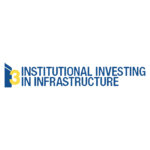January 26, 2022
Asset Management Software Is Critical to Unlocking Energy Storage Potential

Investment-class battery energy storage has arrived. Long regarded as the solution to one of solar’s most vexing challenges, resource intermittency, energy storage now appears poised for exponential growth, thanks to an impressive ten-fold reduction in lithium-ion battery costs over the last decade. Developers are deploying this technology, pioneered for use in consumer electronics and scaled in the electric vehicle industry, in stationary behind-the-meter and utility-scale applications globally to address supply-demand misalignment. It is expanding rapidly beyond its pilot project roots. And investors, now comfortable with the solar asset class, are confronting their next challenge: storage.
Despite the innovative technology’s impressive propensity for growth through innovation, it has continued to lag in digitalization — something required to unlock its potential upsides at investment scale. Without investment-grade asset performance management tools, owners will struggle to scale this new asset class, and lithium-ion battery storage will fall short of its promises to unlock new revenue streams for solar operators and make our electric grid more resilient to natural disasters.
Digital asset management software is now a prerequisite for successful asset management (AM) and operations and maintenance (O&M) in both the wind and solar sectors. By providing full data transparency to asset managers, operators and investors, users can identify underperforming assets rapidly, understand root causes and resolve underlying problems — enhancing risk management, asset lifetimes and return on investment.
While asset performance management software has enabled higher standards of AM and O&M services in the solar sector, the same cannot yet be said for storage. Instead, due to the market’s infancy and storage assets’ greater degree of complexity compared to solar, the operational performance standards for energy storage management largely have yet to be written.
With investor attitudes towards energy storage significantly shifting in the last few years, this has become a growing problem for solar owners and operators. Storage assets are now receiving considerable attention from investors, both as standalone and co-located projects, and solar asset managers and operators need to demonstrate that they can manage storage assets to the same high standards as they do solar assets.
Global markets have already begun to incentivize projects that co-locate batteries with solar PV. In 2019, India auctioned 1.2 GW of solar + storage, and in 2020, the U.S. development pipeline for co-located assets amounted to 15 GW of capacity by 2024, according to the International Energy Agency. It follows that investors in solar-only projects are increasingly looking to bring storage asset data into their solar asset management platforms to facilitate expansion into this new co-located asset class.
Power Factors recently partnered with Arevon to onboard Capital Dynamics’ 100 MW / 400 MWh Saticoy battery energy storage project in California into Power Factors’ Drive asset performance management platform — one of the first major examples of an investor with solar and storage projects adopting a digital asset management system to help them manage both technologies. Power Factors has seen strong initial uptake of its battery energy storage offering, already supporting hundreds of plants.
These recent developments are indicative of investors’ growing appetite for solar asset managers and operators to provide an equally high standard of asset management and O&M in the storage sector.

To ensure that storage asset management and O&M remains profitable, asset managers and operators need technology-agnostic, purpose-built asset performance management platforms that integrate data from other critical software systems such as commercial asset management and CMMS. Below we outline how solar asset managers and operators can achieve this and move toward a comparable benchmark of energy storage and solar asset management and O&M.
Overcoming commercial and technological difficulties
The last two years have marked a pivotal turning point for battery energy storage funding. Battery storage firms raised $994M in venture capital funding across the first quarter of 2021, a 500% increase from the previous year where $164M was raised across six deals (Mercom).
Indeed, storage is booming. With standalone storage projects increasing in scale and solar-plus-storage projects becoming increasingly popular, new layers of complexity have been added to O&M and asset management — leading to additional operational hurdles for operators and asset managers.
Incorporating storage into solar projects will bring the market new optionality, complicating the way solar-plus-storage projects are operated and revenue streams balanced. On top of this, new battery chemistries and laboratory breakthroughs are being announced almost weekly. Each new technology, OEM, and services provider will impose its own physical and commercial constraints on the emerging sector. These factors add to an already complex asset management process.
For example, for storage owners to buy and sell energy on the Day-Ahead market and Real-Time market, storage asset management systems need to be able to provide qualified scheduling entities — agencies that submit bids and offers on behalf of storage owners — with periodic updates to their dispatch assumptions to ensure that the cost of cycling an asset is continually reflected in their models. This requires the collection, processing, and analysis of large volumes of operating and forecast data, something typical solar asset management platforms are not capable of providing.
Installing technology-agnostic asset management platforms capable of aggregating varied commercial and technical streams of data — while meeting the individual operating parameters of each — is crucial to enabling the effective integration of storage assets into a solar portfolio and optimizing the overall performance and profitability of each. Since we cannot know in advance which storage technologies will “win” in the marketplace, the software platform needs to be independent of any single technology and able to adapt to new data feeds and the requirement for new advanced analytics.
Establishing global performance standards
The infancy of the storage market, and its complexity, means it is still catching up to solar and wind when it comes to digital innovation. This has real ramifications for performance visibility for asset managers and operators.
The lack of industry-wide technical data forces storage asset managers and operators to manually identify whether the asset is performing within its expected operational parameters. Wide disparities exist between data exposed across various system original equipment manufacturers (OEMs) — and even among different sites within individual OEMs. Warranty, maintenance and performance guarantee terms can differ wildly from different system providers, and the variability of lifetime charge cycles, maintenance costs, and equipment failures forces asset managers and operators to face a far greater number of unknowns. These challenges transcend operations: they hinder risk assessments essential to contractual negotiations during new asset development and procurement.
To set an operational performance benchmark investors can rely on to justify investment decisions and de-risk storage assets, operators and asset managers need to adopt digital asset performance management platforms that integrate with other software systems, filling in these crucial information gaps.
An asset performance management platform that fully integrates relevant commercial and technical information from both solar and storage assets allows solar operators and asset managers to identify and de-risk substandard performance, understand where there is opportunity for economic optimization, and test model assumptions. In this way, improvements that strengthen the business case for increased investment in storage can be made.
Understanding revenue streams
Greater levels of data transparency in storage assets also give owners and operators increased control over their revenue streams. This is because adding a storage system to a solar farm unlocks energy arbitrage — the simultaneous buying and selling of energy in different markets at different times to take advantage of changing prices. Solar and wind farm loads only follow the available energy resource; in contrast, storage assets can sell power at any time, and do so when market prices exceed energy storage costs.
This adds a considerable amount of complexity to the asset management process, and requires a reliable operating forecast, which an asset performance management platform can provide when data from other technical and commercial data systems is integrated.
As the energy storage sector continues to accelerate and attract investment, integrating technical and commercial data streams from multiple clean energy asset classes into a single asset performance management platform will be key to building upon the sector’s momentum. Solar operators and asset managers now face the need to maximize the captured benefits of their storage assets from Day 1 — capitalizing on storage innovation and lessons learned from solar and wind’s digital transformation.
Asset performance management platforms tailored to the unique characteristics of energy storage will help the technology mature, overcome integration challenges, and establish global performance standards, which, in turn, will increase investor confidence and foster increased deployments of solar and storage projects globally.
Read the full article here.
Source: Solar Power World
Back to Press


